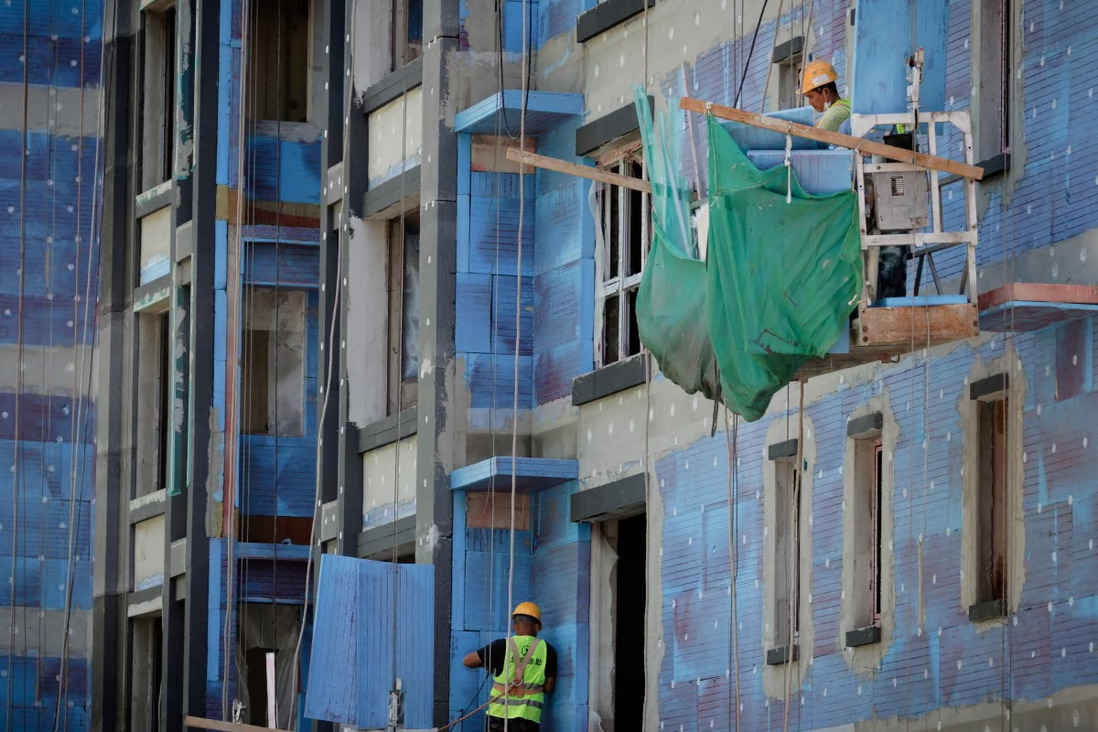By contrast, off-budget borrowing by local and regional governments primarily came about after the 2009 global financial crisis, but they also contributed to China’s hidden debt.
More broadly speaking, China’s nonfinancial sector debt rose to about US$52 trillion in 2022, or 295 per cent of GDP. China’s corporate sector borrowing makes up the largest part of China’s total debt, which is equivalent to about 128 per cent of its second-quarter GDP in 2022, excluding LGFV debts.
Although the central government said last month it would not bail out any local governments unable to repay debts, it has aimed to deleverage its economy for years while trying to avert public debt defaults from state-owned enterprises. Beijing made some progress initially as Chinese companies also faced pressures from the pandemic economy when contemplating borrowing more.
However, the signature “three red lines” policy, targeted at property developers with debt levels exceeding guidelines, quickly sent the real estate market into a policy-induced crisis as many companies were forbidden to take on new debt.
02:35
The Evergrande theme park left derelict in China’s Jiangsu province
Evergrande, one of China’s largest and most indebted real estate developers with more than US$300 billion in liabilities, was forced into restructuring. Its founder, billionaire Hui Ka-yan, reportedly lost more than 90 per cent of his wealth, selling personal properties and private jets to repay the debt of his company.
A sluggish property sector meant a slump in land sales and thus diminishing revenue for local governments, who also faced suffocating fiscal pressure from the seemingly never-ending zero-Covid policy at the time. As a result, LGFVs began aggressively purchasing land in 2022 to soften the revenue fall.
Many of these purchases occurred in lower-tier cities with weaker real estate markets, which many believe would intensify the risk. Even the central government realised the problem of such practices and banned government-backed entities from using debt to finance land purchases in October 2022, depriving the property sector of a potential lifeline.
Meanwhile, as developers experienced severe cash crunches, increasing numbers of “rotten-tail buildings” emerged, leading angry homebuyers to boycott their mortgage payments. Some of these mortgage revolts were apparently organised, which is alarming to authorities.
07:21
Growing anger over China’s unfinished ‘rotten tail’ buildings: ‘We really need this home’
Just a few weeks before China scrapped its zero-Covid policy, regulators rolled out plans to aid the property market. They included credit support to debt-laden developers, extending maturities of existing loans and apparently reversing the “three red lines” rule.
In the end, the “necessary pain” from the deleveraging campaign and determination to break away from the debt-driven model in the property sector proved too much for China’s economy. Current efforts to ensure the completion and handover of unfinished projects would help reassure some prospective homebuyers. However, it is becoming harder for China to expect to simply grow out of this problem in the long run.
Last year, for the first time since the 1960s, Beijing officially reported negative population growth. The demand for living spaces in China’s cities – especially lower-tier cities – has already slowed, and a shrinking population implies a further slowdown of housing demand. Moreover, a rapidly ageing population will increase the burden of local government spending on welfare amid worsening budget deficits.
Globally speaking, more wealthy countries are exploring options to “reshore” or “friendshore” their supply chains in the aftermath of the pandemic, which injects a dangerous dose of uncertainty into China’s economy. Investors and businesses are still struggling from the policy flip-flopping, and it will probably take longer to revive confidence than sales numbers.
Real estate projects under construction in the Shekou area of Shenzhen on November 19, 2021. Photo: Reuters
Real estate projects under construction in the Shekou area of Shenzhen on November 19, 2021. Photo: Reuters
Without any predictions, one could make the argument that conditions are ripening for a colossal failure of China’s economy from the bursting of debt bubbles and sustained fatigue of the property sector. The year 2023 will mark a new record for local government debt maturity, and more than 40 per cent of China’s local bonds will come due in the next five years.
On the other hand, even if China survives this coming wave, developers are likely to fall back into the old habit of building up debt to unsustainable levels. Local governments will still have to rely on land sales for revenue, which incentivises officials to keep propping up sales and prices. As a result, the central government steps in again, creating a vicious leverage-deleverage cycle.
To truly rejuvenate economic growth and avoid cycles of boom and bust, the central government must make consistent, long-overdue decisions to reform the local government funding mechanisms, expand the social safety net to free up private spending and deepen structural reform to allow for competition from the private sector and generate sustained, innovation-based growth.
Shang Wen is a PhD student at the Sam Nunn School of International Affairs of Georgia Institute of Technology
Earl Carr is founder and chief executive officer at CJPA Global Advisors LLC
Source: SCMP

